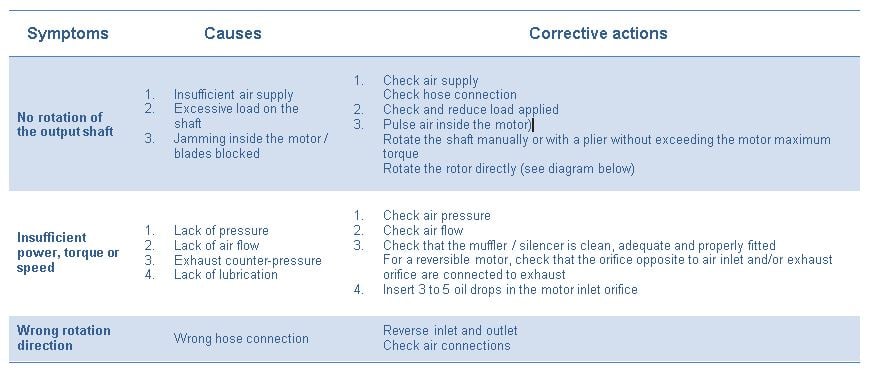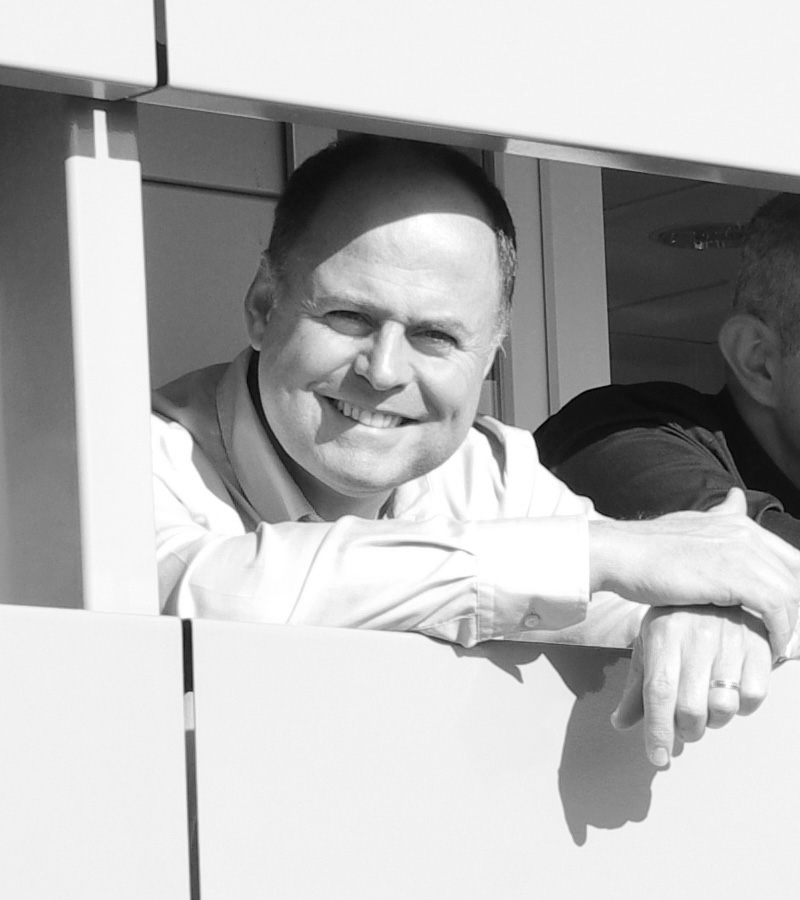The advantage of a pneumatic motor is that it has a simple, robust design. Unlike electric motors, the most common failures can usually be put right rapidly, without any need for expert knowledge, simply by knowing a few tips that we’ll pass on to you here.
First, you need to know that a pneumatic motor does not reach full power until after it’s been in use for about 1 hour (the time it takes to break in the motor).
Before using a new motor or one that has been in storage, we recommend that you add 3 to 5 drops of pneumatic oil to the motor’s feed aperture, then connect it to a well lubricated air network and let it run for 5 to 10 minutes before reaching a ‘normal’ performance level.
The most common error comes from the feed source or connection. If there’s a pathway problem on the distributor, if you’re using a non-reversible motor (which only rotates in one direction), then the motor won’t rotate at all. On the other hand, with a reversible motor, if the distributor is not connected correctly and the exhaust opening is not the right one, the motor will still work but with reduced power.
The motor does not have the right dimensions for the task in hand. The load exerted is too heavy.
If there is a power problem with a new pneumatic motor, check the air feed (both flow and pressure) as well as the lead and any connections.
In this situation, it could be that non-filtered air has damaged the motor. Particles may have penetrated the rotor’s interior. The motor has seized, or dust or a tiny chip may have scratched the stator causing the motor to wear prematurely.
Check also that the motor is well lubricated. Insufficient lubrication can cause loss of power.
So you can be sure that the air fed into the motor is clean, dry and correctly lubricated, we strongly recommend using an FRL unit (filtration, regulation, lubrication). This equipment is an essential part of your pneumatic system, guaranteeing the performance and durability of its components. Choose the FRL unit carefully, taking into account the pressure and flow specifications of all the elements incorporated in the pneumatic system.


+ 33 (0) 4 75 40 27 15
sales@modec.fr
ZI Sirius Quatre
80, allée René Higonnet
26760 Beaumont-lès-Valence, FRANCE
© Tous droits réservés - Modec - Création : ARKOD